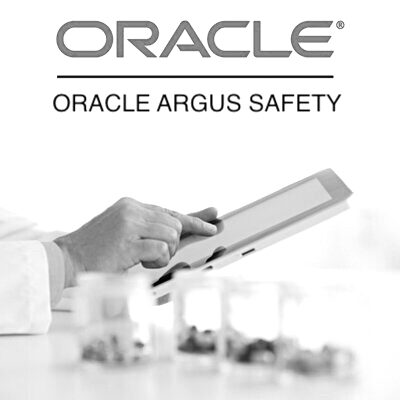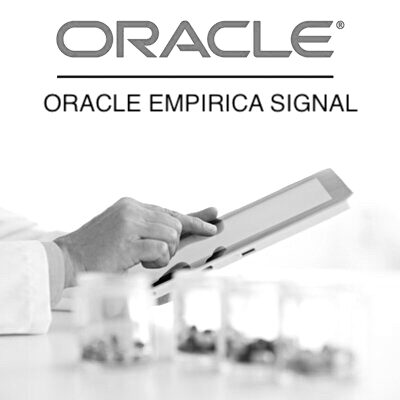Table of Contents
- Post Marketing Surveillance
- Introduction to Post Marketing Surveillance
- The FDA’s 2008 Sentinel Initiative
- The Science of Safety
- Active Surveillance
- You may be interested in…
- Oracle Argus Safety Essentials
- Oracle Argus Safety Essentials + Console
- Oracle Argus Safety – Live Online
- Oracle Argus Safety + Console – Live Online
- Oracle Empirica Signal
- Oracle Empirica Signal – Live Online
- Diploma in Pharmacovigilance
- Argus Safety – Business Configuration and Administration
Post Marketing Surveillance
Introduction to Post Marketing Surveillance
The fundamental importance of safety and efficacy assessment throughout the drug development process has been emphasized many times. Efficacy is also considered throughout the drug development process, particularly in the discovery phase and then again in therapeutic exploratory and confirmatory clinical trials.
However, safety and efficacy assessments conducted and reported to regulatory agencies to request marketing approval have their limitations. As Olsson and Meyboom (2006) noted:
The randomized controlled clinical trial is the method of choice for the objective and quantitative demonstration of the efficacy and tolerability of a new medicine. None the less, such studies have limitations in discovering possible adverse events that may occur, in particular those that are rare or develop after prolonged use, in combination with other drugs, or perhaps due to unidentified risk factors. Clinical trials are inherently limited in duration and number of patients, and, significantly, patients are selected prior to inclusion. In other words, the conditions of a trial are artificial compared with the real-life use after the introduction of a medicine.
This statement may sound somewhat surprising, however, the strength of randomized clinical trials is that they are comparative, not necessarily representative. From this point forward, it may be helpful to think of the clinical trials we have discussed so far as pre-approval clinical trials, i.e., clinical trials whose results are reported in regulatory applications for marketing approval.
These preapproval trials are essential to the process of new drug development, but it is vitally important to realize that evaluation of a drug does not stop once marketing approval has been granted. The safety and efficacy/effectiveness of the drug must be evaluated throughout its entire lifecycle. In pre-approval clinical trials, adverse events are recorded for subjects in both active drug and placebo treatment groups.
Given the double-blind nature of many trials, it is not known at the time whether a specific adverse event could actually be related to the investigational (or active control) drug. The term adverse drug reaction is typically used in post-marketing situations. Here, when it is known what drug an individual is taking, there is the presumption that an adverse occurrence is related to that drug.
This logic is far from perfect at the individual patient level, but accumulating evidence across a wide range of occurrences is more powerful. Post-marketing assessments can be conducted via postmarketing (experimental) clinical trials and open label trials. Additionally, wide-ranging postmarketing surveillance techniques are also available.
“No drug which is pharmacologically and these are the focus of active is entirely without hazard. The hazard may be insignificant or may be acceptable in relation to the drug’s therapeutic action. Furthermore, not all hazards can be known before a drug is marketed:”
Report by the Committee on the Safety United Kingdom, 1970
The FDA’s 2008 Sentinel Initiative
In May 2008 the FDA released a report entitled The Sentinel Initiative: A National Strategy for Monitoring Medical Product Safety (FDA, 2008).
This report noted that it is important to establish a national electronic safety system capable of tracking the performance of a drug once approved, commenting as follows:
The U.S. Food and Drug Administration of the 21st century needs such an electronic system to serve as sentinel over the safety of medical products and help FDA fulfill its responsibility to protect the health and well being of the American people. Learning all we can about the risks and benefits of medical products is essential. Accurate and reliable information must be obtained before products are approved and afterwards when they are being used by large and diverse populations. Postmarket safety monitoring is a critical part of our job.
A key aspect of the sentinel initiative is the application of information technologies to the way health-related information is collected, managed, and shared. Technologies such as electronic health records (EHRs), e-prescribing, and electronic decision support tools will make the FDA’s risk management systems more efficient, improve their ability to protect the public, and, potentially, to reduce healthcare costs. The FDA’s Critical Path Initiative has been instrumental in movement toward an entirely electronic environment for information management.
The Science of Safety
The increased focus on safety and quality discussed in the previous section are in part “a result of an emerging science of safety, which combines a growing understanding of disease and its origins with new methods of safety signal detection” (FDA, 2008). The science of safety is an integrative science.
As the sentinel initiative report noted, investigations at the molecular biological level are permitting a greater understanding of the origins and nature of diseases and conditions of clinical interest and of adverse drug reactions to-and therapeutic benefit from- pharmacological therapy.
Second, new methods of signal detection, data mining, and data analysis are enabling researchers to identify and then to generate and test hypotheses about safety problems in the populations using medical products.
Third, precision medicine is generating information about “the unique genetic and biologic features of each person that some day will help determine how he or she responds to treatment” (FDA, 2008). The report continued as follows: Using these tools, FDA has increasingly adopted a life-cycle approach to product development and evaluation.
This kind of approach should be used for all medical products so that safety signals generated at any point in the process can be evaluated along with relevant benefit-risk data to inform treatment choices and regulatory decision making. With regard to benefit-risk data, the FDA regards benefit-risk analysis to be “one of the important facets of the science of safety that urgently requires additional development” (FDA, 2008).
Active Surveillance
To date, most post-marketing surveillance has been passive in nature. The FDA is keen to supplement this monitoring with active surveillance
activities. These include Linking, in a secure fashion, existing electronic databases run by private health plans, insurance plans, government agencies, and industry.
Querying electronic health records, claims databases, and other such repositories to pick up early warnings of adverse events. Studying de-identified data on millions of people in something much closer to real time.
Active surveillance systems incorporating the appropriate security and privacy safeguards will facilitate FDA’s identification of priority safety questions and the development of mechanisms to protect patients in a more efficient and timely manner.
This completes our discussion on Post Marketing Surveillance. We hope this gives you flavour the key terminologies in Post Marketing Surveillance in pharmacovigilance and a flavour of this allied science.
For a deep insight into the world of Pharmacovigilance, subscribe to our Pharmacovigilance Knowledgebase
Want to explore a career in Pharmacovigilance? Join our Diploma in Pharmacovigilance program and kick-start a career in Pharmacovigilance and Oracle Argus Safety.
Already completed a program in Pharmacovigilance. Enhance your expertise on the Oracle Argus Safety software by pursuing our Oracle Argus Safety program. You can also subscribe for 24×7 access to the Oracle Argus Safety software for practice.
You may be interested in…
-
 eLearning + software
eLearning + softwareOracle Argus Safety Essentials
$599.00 -
 eLearning + software
eLearning + softwareOracle Argus Safety Essentials + Console
$799.00 -
 Live Online
Live OnlineOracle Argus Safety – Live Online
$999.00 -
 Live Online
Live OnlineOracle Argus Safety + Console – Live Online
$999.00 -
 eLearning + software
eLearning + softwareOracle Empirica Signal
$599.00 -
 Live Online
Live OnlineOracle Empirica Signal – Live Online
$999.00 -
 eLearning + software
eLearning + softwareDiploma in Pharmacovigilance
$799.00 -
 eLearning + software
eLearning + softwareArgus Safety – Business Configuration and Administration
$599.00

